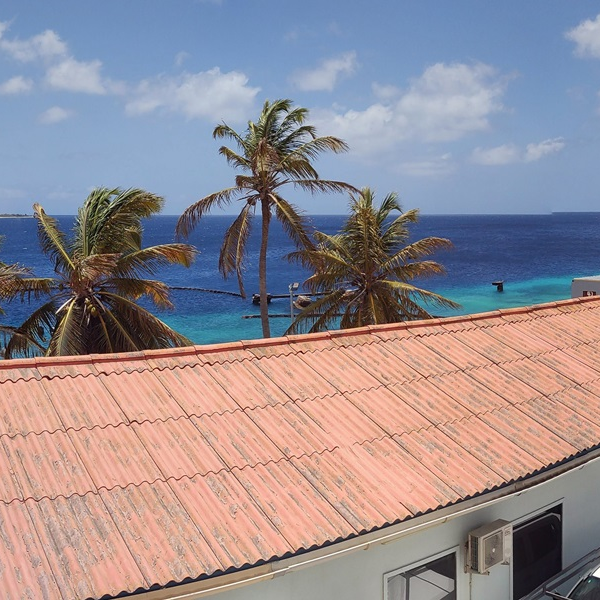Expansion in Hato, Bonaire
Meeting the growing demand for drinking water

Expansion in Hato, Bonaire
In Bonaire, population growth and increased tourism has led to a rise in the demand for drinking water. To meet this demand, Water- en Energiebedrijf Bonaire (WEB) elected to expand its drinking water plant in Hato, adding two extra treatment units and a new post-treatment unit. On this project, Witteveen+Bos was responsible for project management, engineering (coordination) and works supervision.
Bonaire has insufficient groundwater to meet the island’s demand for drinking water. That means it is entirely dependent on sea water. The easiest way to turn this sea water into drinking water is by applying a process called sea water reverse osmosis (SWRO). Bonaire’s drinking water plant in Hato had previously produced 7,200 m3 of water a day. In the summer of 2024, two SWRO units were added, each of which supplies 1,200 m3 of water a day. Since then, the plant’s daily output has increased to 9,600 m3.
Reverse osmosis without chemicals
The two SWRO units – designed, produced and installed by IDE Water Technologies, a company that WEB had worked with in the past – employ a modular treatment approach consisting of three steps.
First, a pretreatment step applies media filtration to the sea water using materials including anthracite and sand. Next, a double reverse osmosis step takes place, in which pressure is applied to filter salts and other components out of the water. Once the sea water has been almost completely desalinated, a post-treatment step occurs in which supplements such as calcium and magnesium are added.
Uniquely, this treatment process desalinates the sea water without using any chemicals: nothing is added to the concentrated water that is returned to the sea.

Problem-free expansion
On this project, Witteveen+Bos ensured that the reverse osmosis units were connected to either existing, or to new or modified piping so that WEB could continue producing drinking water during the expansion works. The engineering work this involved included reorganising the distribution of sea water across the different treatment lines. Key considerations on this task were ensuring supply, retaining redundancy, and making a step-by-step approach to expansion possible.



Built-in redundancy
An essential element of the drinking water plant’s configuration is built-in redundancy. This ensures that each treatment unit can produce drinking water independently of the others, allowing the plant to partially continue production in the event of a catastrophe. Given the importance of this facility as the island’s only source of drinking water, this is no luxury.

More information?
